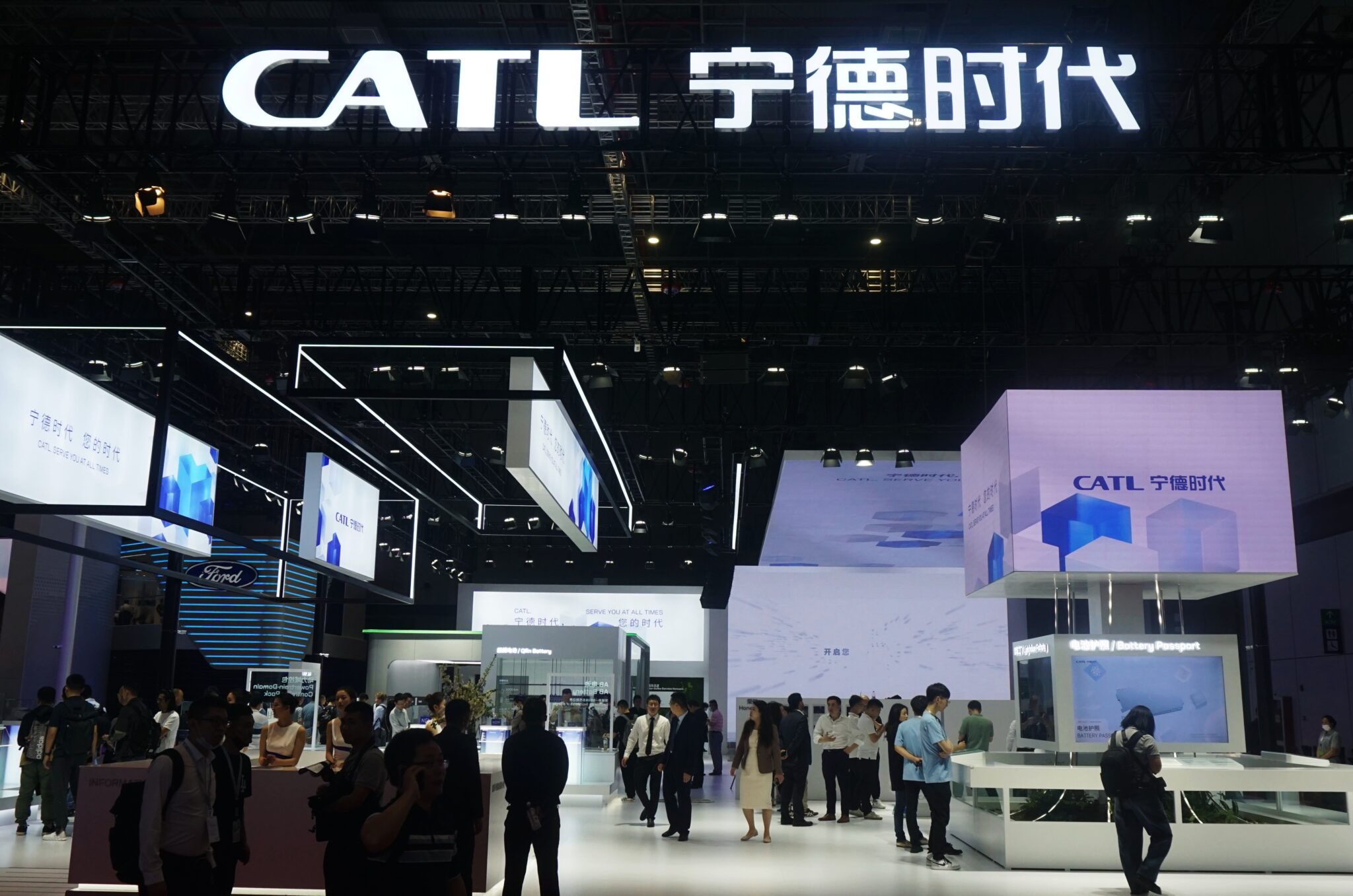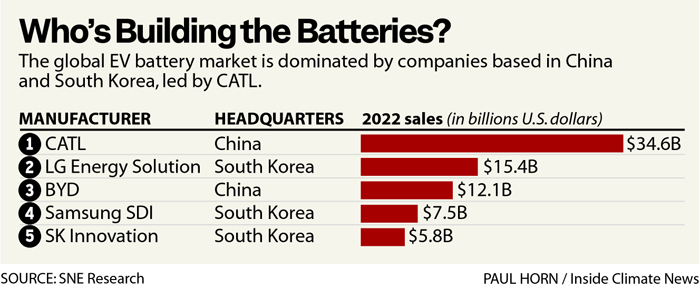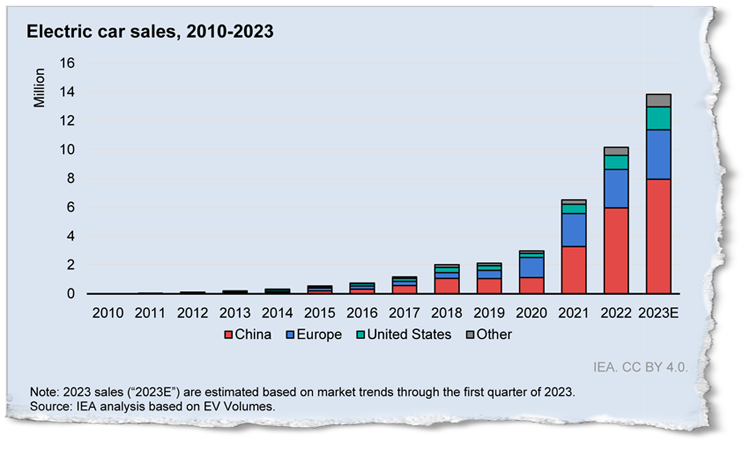 People visit the booth of CATL, a major power battery maker, at the Shanghai Auto Show in Shanghai, China Wednesday, April 19, 2023. Credit: Long Wei / Feature China/Future Publishing via Getty Images
People visit the booth of CATL, a major power battery maker, at the Shanghai Auto Show in Shanghai, China Wednesday, April 19, 2023. Credit: Long Wei / Feature China/Future Publishing via Getty ImagesHere’s one: CATL, the China-based company that is the world’s leading manufacturer of EV batteries, provided details last month on a next-generation battery that will have an energy density of up to 500 watt-hours per kilogram, which is roughly double the energy density of the leading batteries on the market—a difference that will lead to longer range before needing to recharge.
This will be a “semi-solid state” design, which is one of the reasons it’s able to pack in so much energy (more on that in a bit).
Usually, when I see an announcement like this, it’s attached to a timetable that is vague or several years away. So it was notable that a CATL official, speaking at the Shanghai Auto Show, said this battery would begin mass production this year.
The company said the battery would be safe enough and have enough energy density to be able to work in aircraft, in addition to electric cars and trucks. The company said it is working with partners to develop electric passenger aircraft and is “practicing aviation-level standards and testing in accordance with aviation-grade safety and quality requirements.”
CATL, which stands for Contemporary Amperex Technology Co. Limited, has been a battery supplier for many of the world’s largest automakers, including BMW, General Motors, Tesla and Volkswagen.
Last year, CATL introduced a new battery with an energy density of up to 255 watt-hours per kilogram and a capability of more than 600 miles of driving range. The first vehicles that use the battery are now going on sale in China but are not yet available in the United States. An increase in energy density means that a battery can go further on a single charge, and it allows for the possibility of using smaller battery packs without a loss of range.
The company hasn’t given a range figure for the next generation 500 watt-hours battery, and it hasn’t said which brands or models will be the first to use it.

To help understand some of the terminology CATL is using, I got in touch with Venkat Srinivasan of Argonne National Laboratory in the Chicago area. He is a battery scientist and director of the Argonne Collaborative Center for Energy Storage Science.
Some questions and answers:
What’s a semi-solid state battery?
“We use the term ‘hybrid battery,’” Srinivasan said. “So what it means is that it’s got a solid, but it also has a liquid.”
The solid or liquid is the electrolyte, the material inside the battery through which lithium-ions flow.
Companies are working to develop batteries that are partially solid state or fully solid state because the materials allow for greater energy density than using liquids or gels.
This is a shift from today’s lithium-ion batteries, nearly all of which have liquid or gel electrolytes.
A semi-solid state battery will often have a solid electrolyte in its anode, which is the negatively charged side during discharging, and a liquid or gel in its cathode, which is its positively charged side.
QuantumScape, a battery manufacturing startup in San Jose, California, is one prominent example of a company using a semi-solid state design, based on presentations about its technology.
But companies describe the designs in different ways. QuantumScape doesn’t use the term “semi-solid state” for its battery, and such shorthand can obscure some big differences in materials and designs between companies.
What’s a condensed matter battery?
In addition to being semi-solid state, CATL describes its new product as a “condensed matter battery.”
“I have no idea what that is,” Srinivasan said.
He said the term may be more about branding or marketing than the battery’s design.
“Oftentimes we mistake branding to be a scientific concept, right?” he said. “Or oftentimes, it’s just pure branding. And that’s OK. That’s what companies do.”
How does this battery news fit into the bigger picture of EV adoption?
The development of batteries with higher energy density should lead to EVs with longer ranges. Some of the designs use materials that are less expensive than in current lithium-ion batteries, so there is potential for lower EV pricing.
But it’s important to realize that, even before these better and cheaper batteries hit the market, EV sales are soaring.
U.S. EV sales rose 45 percent in the first quarter compared to the first quarter in the prior year, according to Cox Automotive. EVs were 7.2 percent of all light cars and trucks sold, a record high.
“The hockey stick is here,” Srinivasan said, referring to the shape of the growth curve of EV sales. “It is going much faster than any of us can even anticipate.”

The pace of growth is good for the climate, since transportation is the leading source of U.S. greenhouse gas emissions. But growth also adds to the urgency of some of the major concerns about EVs.
Companies and governments know that they need to work to build a public charging infrastructure. This is expensive and complicated.
The manufacturing of batteries and EVs have negative effects on the environment, through mining and concerns about the waste left over at the end of a battery’s life. Companies and governments are working to reduce the harmful effects, which is also expensive and complicated.
And that’s just the start of a long list of the downsides of EVs that need to be addressed quickly.